Abstract
The intrasubject variability of repeat pulmonary function testing was examined in 20 healthy children aged 10 to 16 years. The children were tested a maximum of 11 times over a period of two months. The tests examined were spirometry, maximum expiratory flow-volume curves, body plethysmograph determination of lung volumes, and single breath nitrogen washout. The time of day or the length of the re-test interval, up to a period of two months, did not significantly affect the variability. Standard deviation was used when comparing the variability of measurements with the same units and coefficient of variation was used when comparing measurements of different units. The vital capacity measured by spirometry was the least variable measurement. Functional residual capacity, residual volume and total lung capacity were equally reproducible but as a group were more variable than vital capacity. There was no significant difference between the variability of the following measurements: forced expired flow from 25 to 75% of the vital capacity, flows at 70%, 50% and 40% total lung capacity, and flows at 50% vital capacity. Flows at 25% vital capacity were significantly less variable than other measurements of flow. The variability of forced expired volume in one second was examined and the use of this measurement in determining significant bronchial hyper-reactivity was assessed.
Full text
PDF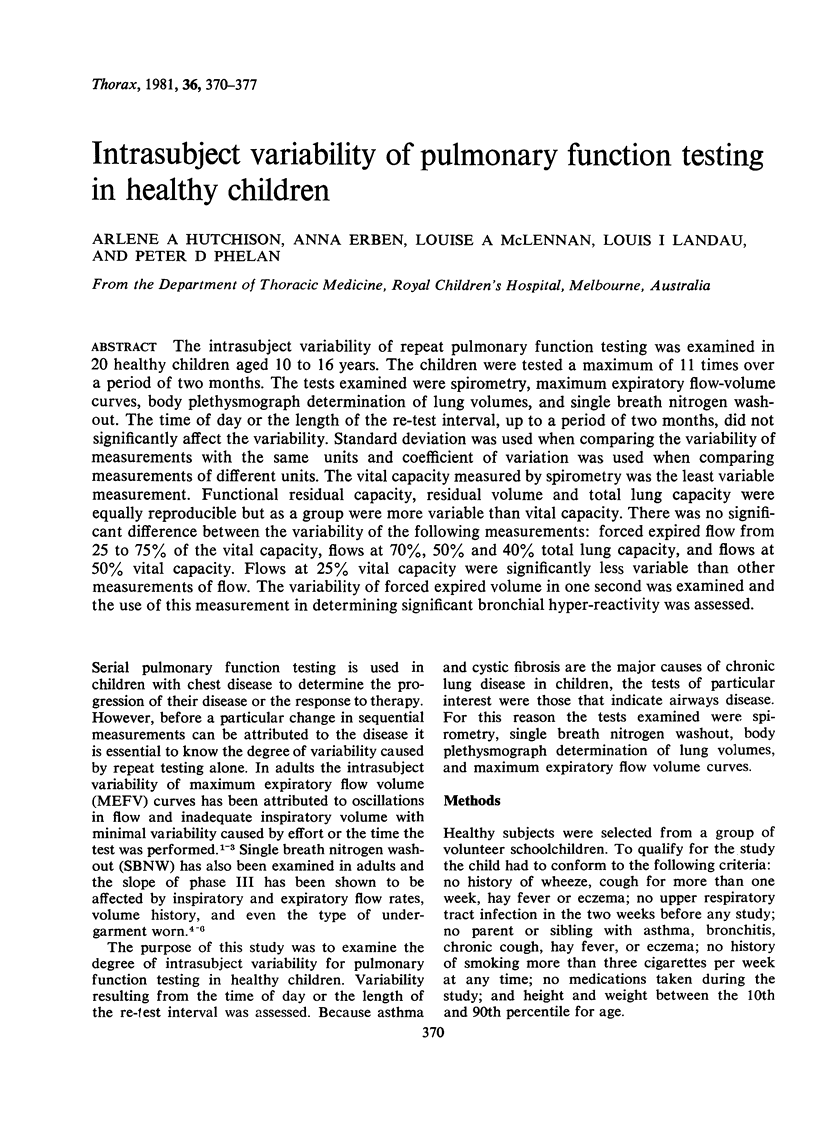
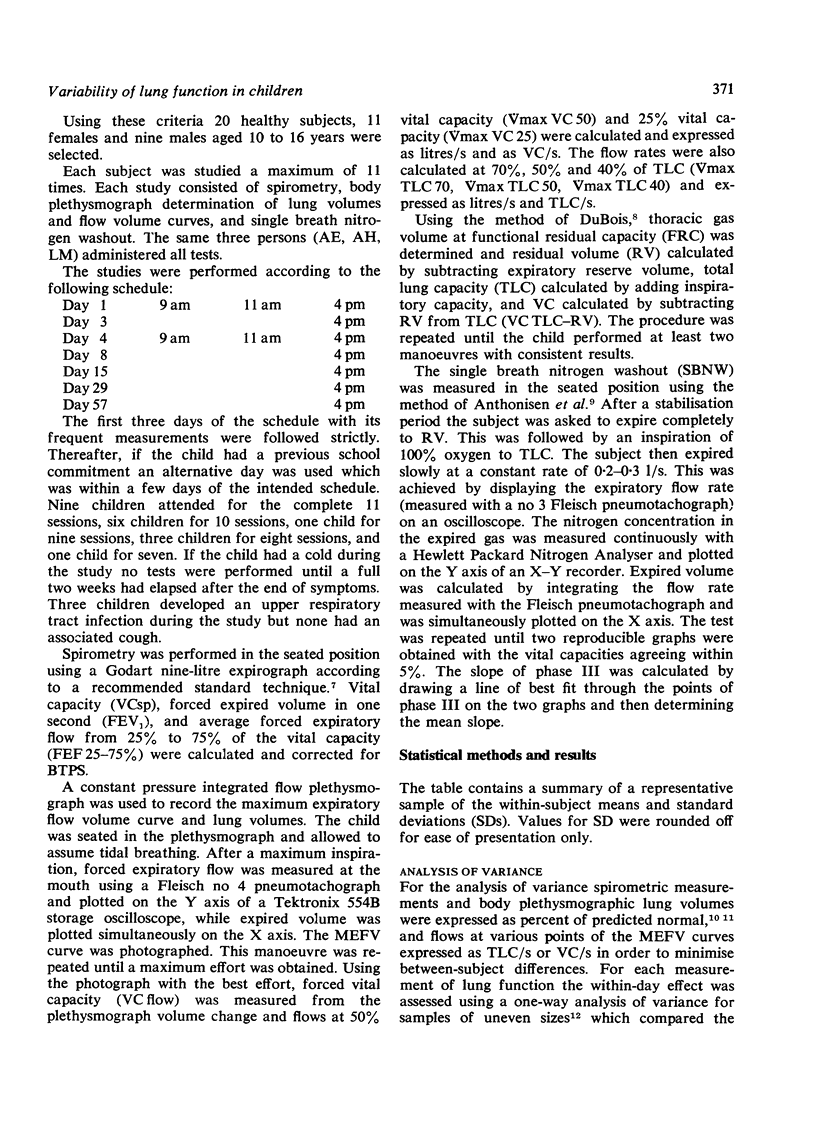
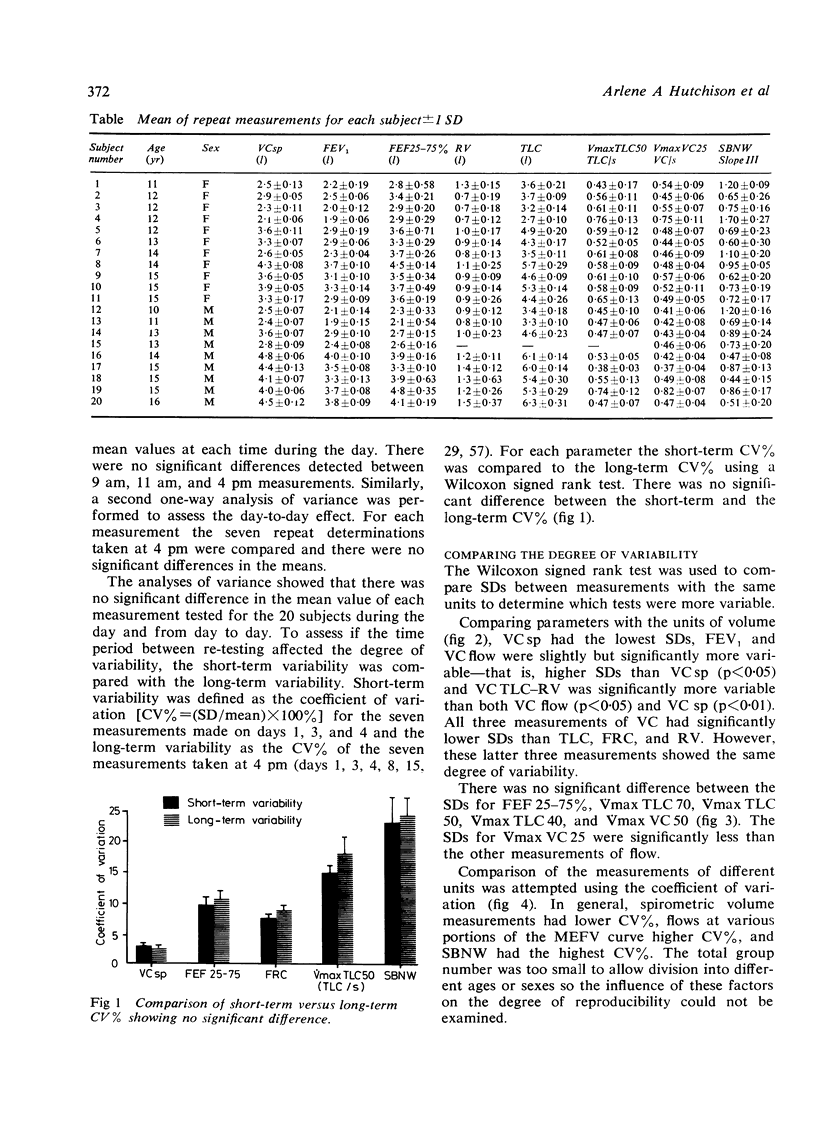
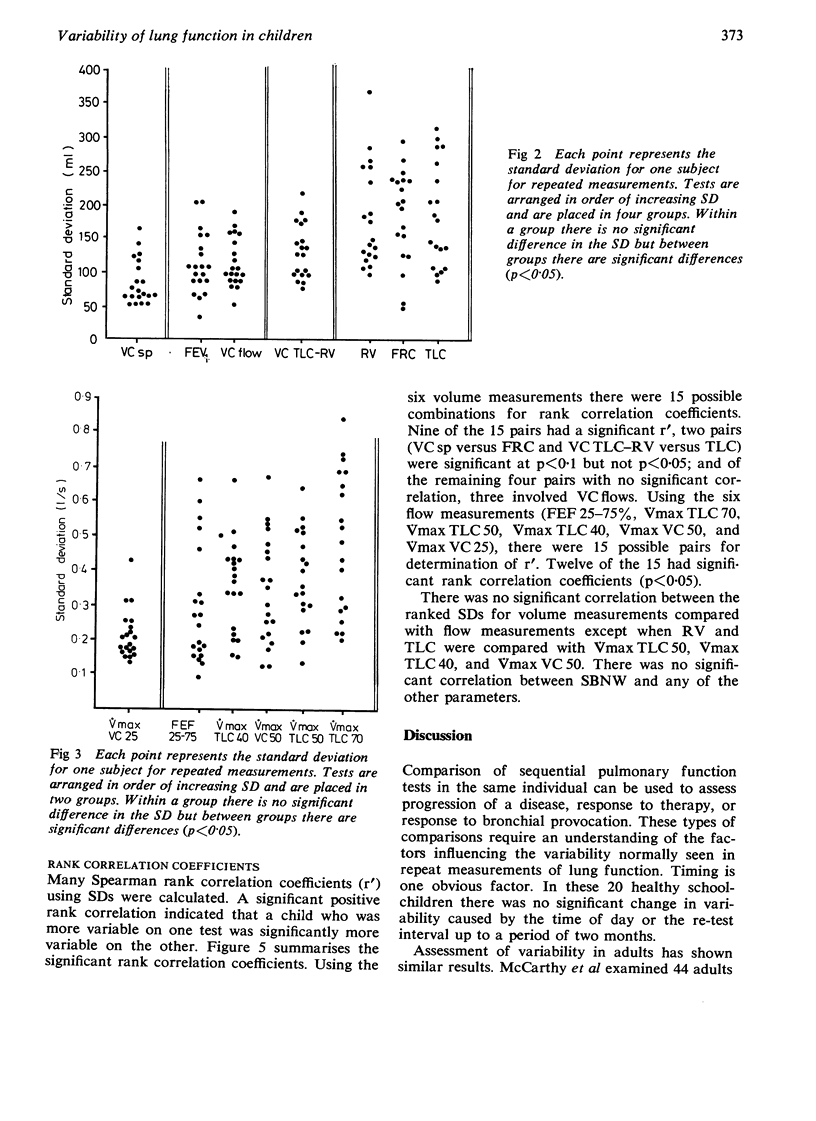
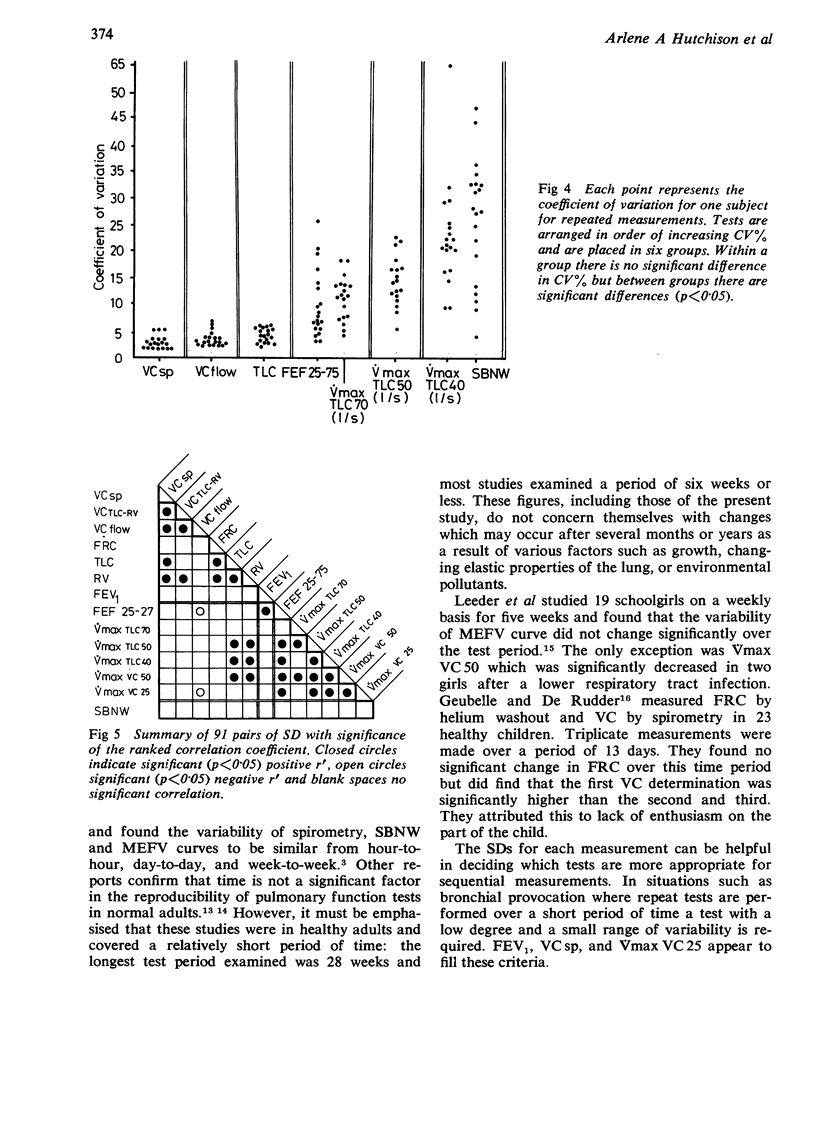
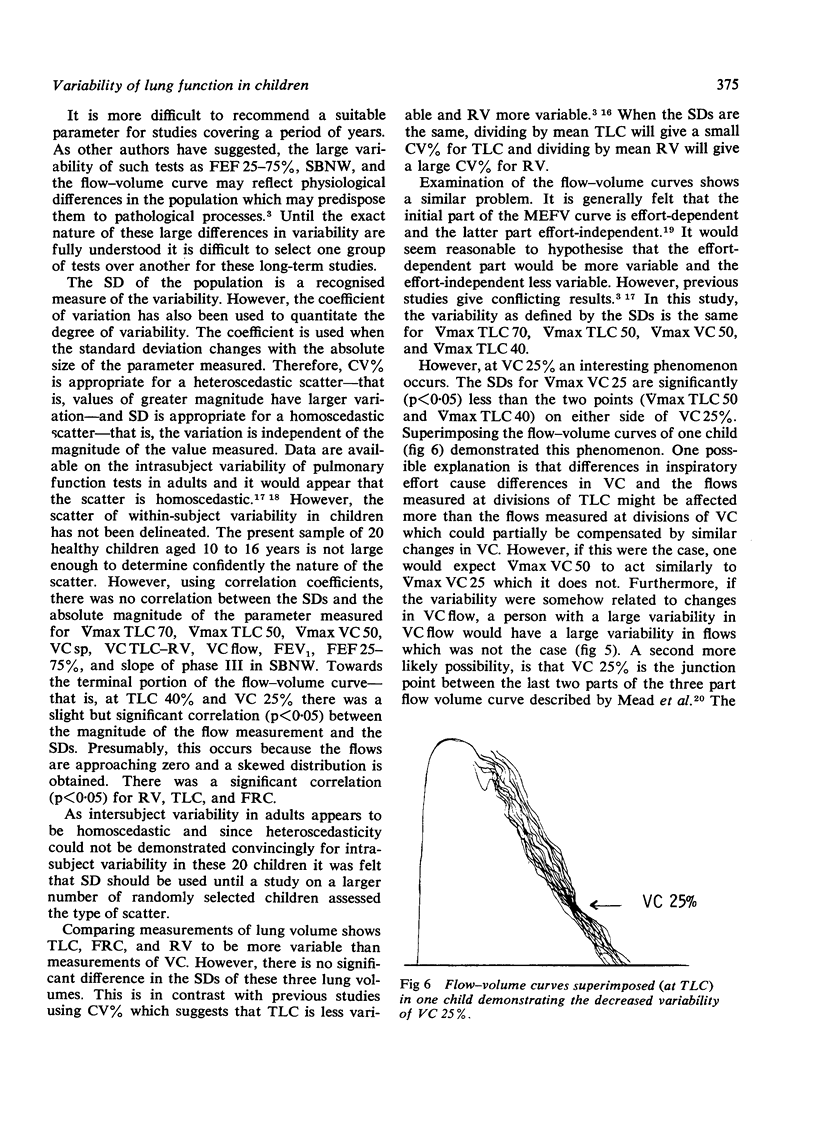
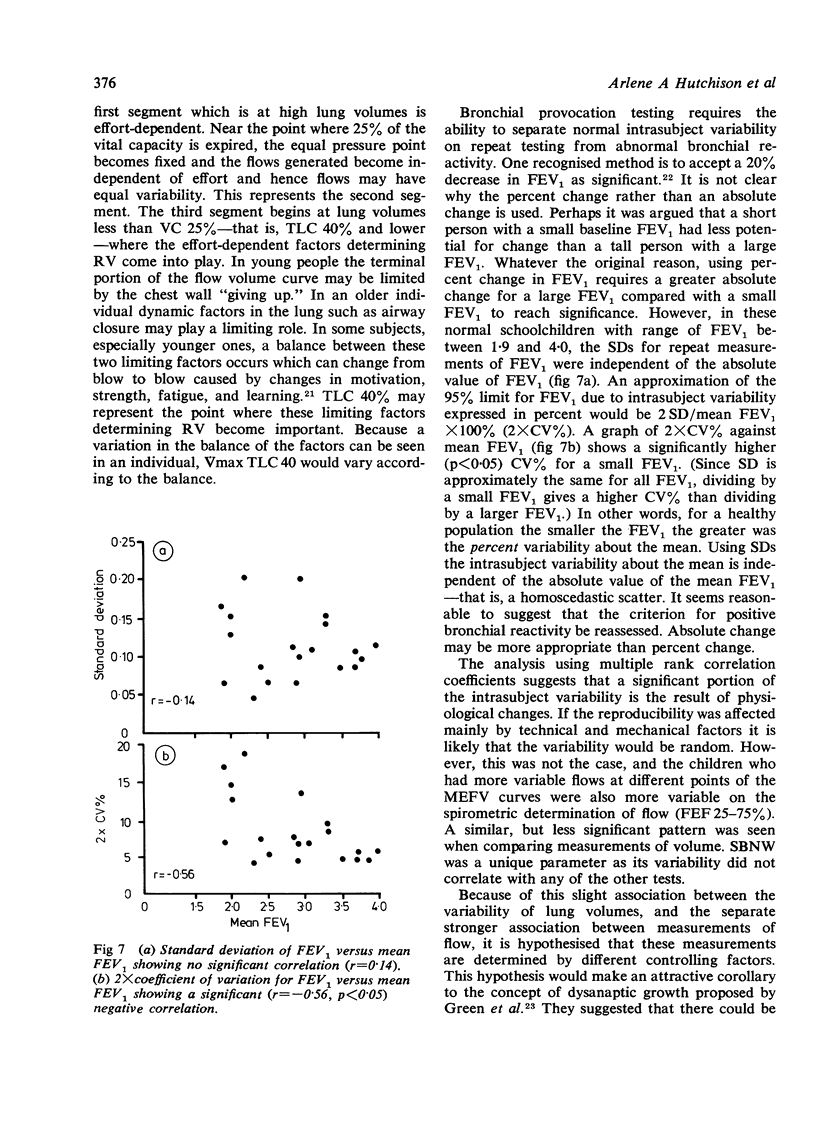
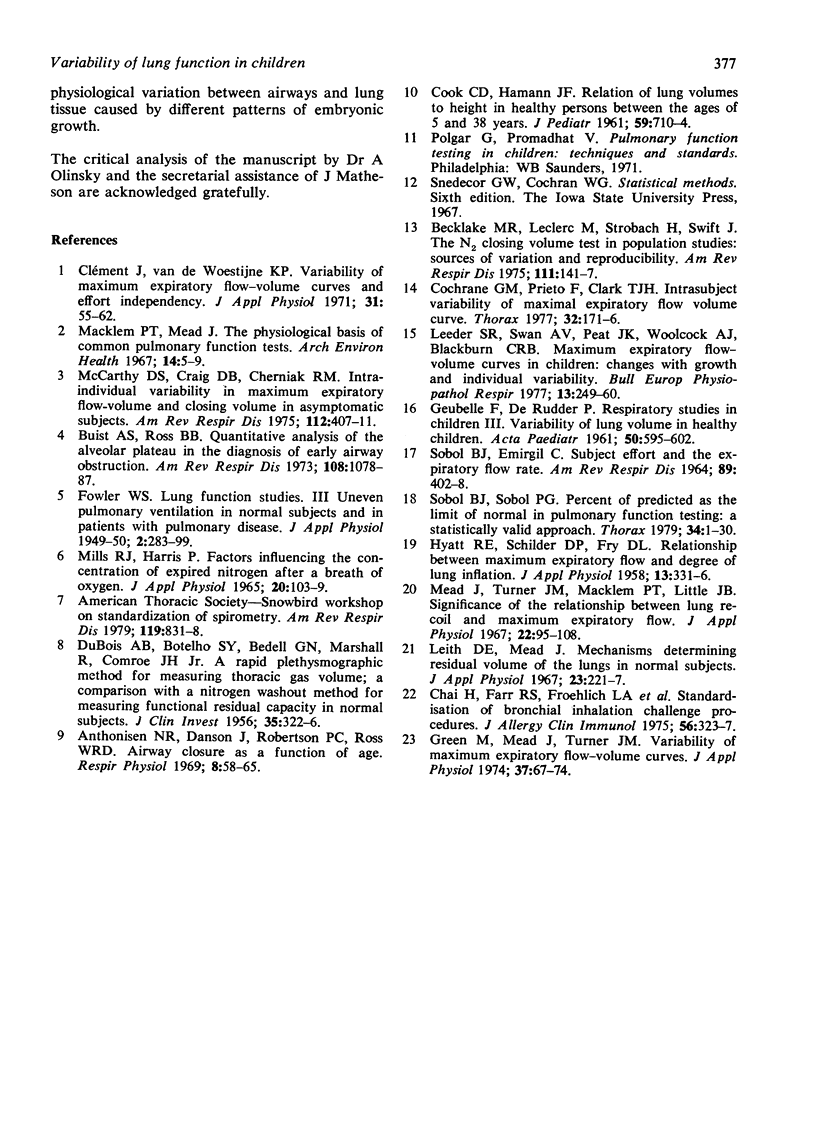
Images in this article
Selected References
These references are in PubMed. This may not be the complete list of references from this article.
- Anthonisen N. R., Danson J., Robertson P. C., Ross W. R. Airway closure as a function of age. Respir Physiol. 1969 Dec;8(1):58–65. doi: 10.1016/0034-5687(69)90044-9. [DOI] [PubMed] [Google Scholar]
- Becklake M. R., Leclerc M., Strobach H., Swift J. The N2 closing volume test in population studies: sources of variation and reproducibility. Am Rev Respir Dis. 1975 Feb;111(2):141–147. doi: 10.1164/arrd.1975.111.2.141. [DOI] [PubMed] [Google Scholar]
- Buist A. S., Ross B. B. Quantitative analysis of the alveolar plateau in the diagnosis of early airway obstruction. Am Rev Respir Dis. 1973 Nov;108(5):1078–1087. doi: 10.1164/arrd.1973.108.5.1078. [DOI] [PubMed] [Google Scholar]
- COOK C. D., HAMANN J. F. Relation of lung volumes to height in healthy persons between the ages of 5 and 38 years. J Pediatr. 1961 Nov;59:710–714. doi: 10.1016/s0022-3476(61)80007-3. [DOI] [PubMed] [Google Scholar]
- Chai H., Farr R. S., Froehlich L. A., Mathison D. A., McLean J. A., Rosenthal R. R., Sheffer A. L., Spector S. L., Townley R. G. Standardization of bronchial inhalation challenge procedures. J Allergy Clin Immunol. 1975 Oct;56(4):323–327. doi: 10.1016/0091-6749(75)90107-4. [DOI] [PubMed] [Google Scholar]
- Clément J., Van de Woestijne K. P. Variability of maximum expiratory flow-volume curves and effort independency. J Appl Physiol. 1971 Jul;31(1):55–62. doi: 10.1152/jappl.1971.31.1.55. [DOI] [PubMed] [Google Scholar]
- Cochrane G. M., Prieto F., Clark T. J. Intrasubject variability of maximal expiratory flow volume curve. Thorax. 1977 Apr;32(2):171–176. doi: 10.1136/thx.32.2.171. [DOI] [PMC free article] [PubMed] [Google Scholar]
- DUBOIS A. B., BOTELHO S. Y., BEDELL G. N., MARSHALL R., COMROE J. H., Jr A rapid plethysmographic method for measuring thoracic gas volume: a comparison with a nitrogen washout method for measuring functional residual capacity in normal subjects. J Clin Invest. 1956 Mar;35(3):322–326. doi: 10.1172/JCI103281. [DOI] [PMC free article] [PubMed] [Google Scholar]
- FOWLER W. S. Lung function studies; uneven pulmonary ventilation in normal subjects and in patients with pulmonary disease. J Appl Physiol. 1949 Dec;2(6):283–299. doi: 10.1152/jappl.1949.2.6.283. [DOI] [PubMed] [Google Scholar]
- GEUBELLE F., DE RUDDER P. Respiratory studies in children. III. Variability of the lung volumes in healthy children. Acta Paediatr. 1961 Nov;50:595–602. doi: 10.1111/j.1651-2227.1961.tb08051.x. [DOI] [PubMed] [Google Scholar]
- Green M., Mead J., Turner J. M. Variability of maximum expiratory flow-volume curves. J Appl Physiol. 1974 Jul;37(1):67–74. doi: 10.1152/jappl.1974.37.1.67. [DOI] [PubMed] [Google Scholar]
- HYATT R. E., SCHILDER D. P., FRY D. L. Relationship between maximum expiratory flow and degree of lung inflation. J Appl Physiol. 1958 Nov;13(3):331–336. doi: 10.1152/jappl.1958.13.3.331. [DOI] [PubMed] [Google Scholar]
- Leeder S. R., Swan A. V., Peat J. K., Woolcook A. J., Blackburn C. R. Maximum expiratory flow-volume curves in children: changes with growth and individual variability. Bull Eur Physiopathol Respir. 1977 Mar-Apr;13(2):249–260. [PubMed] [Google Scholar]
- Leith D. E., Mead J. Mechanisms determining residual volume of the lungs in normal subjects. J Appl Physiol. 1967 Aug;23(2):221–227. doi: 10.1152/jappl.1967.23.2.221. [DOI] [PubMed] [Google Scholar]
- MILLS R. J., HARRIS P. FACTORS INFLUENCING THE CONCENTRATION OF EXPIRED NITROGEN AFTER A BREATH OF OXYGEN. J Appl Physiol. 1965 Jan;20:103–109. doi: 10.1152/jappl.1965.20.1.103. [DOI] [PubMed] [Google Scholar]
- Macklem P. T., Mead J. The physiological basis of common pulmonary function tests. Arch Environ Health. 1967 Jan;14(1):5–9. doi: 10.1080/00039896.1967.10664685. [DOI] [PubMed] [Google Scholar]
- McCarthy D. S., Craig D. B., Cherniack R. M. Intraindividual variability in maximal expiratory flow-volume and closing volume in asymptomatic subjects. Am Rev Respir Dis. 1975 Sep;112(3):407–411. doi: 10.1164/arrd.1975.112.3.407. [DOI] [PubMed] [Google Scholar]
- Mead J., Turner J. M., Macklem P. T., Little J. B. Significance of the relationship between lung recoil and maximum expiratory flow. J Appl Physiol. 1967 Jan;22(1):95–108. doi: 10.1152/jappl.1967.22.1.95. [DOI] [PubMed] [Google Scholar]
- SOBOL B. J., EMIRGIL C. SUBJECT EFFORT AND THE EXPIRATORY FLOW RATE. Am Rev Respir Dis. 1964 Mar;89:402–408. doi: 10.1164/arrd.1964.89.3.402. [DOI] [PubMed] [Google Scholar]
- Sobol B. J., Sobol P. G. Per cent of predicted as the limit of normal in pulmonary function testing: a statistically valid approach. Thorax. 1979 Feb;34(1):1–3. doi: 10.1136/thx.34.1.1. [DOI] [PMC free article] [PubMed] [Google Scholar]



